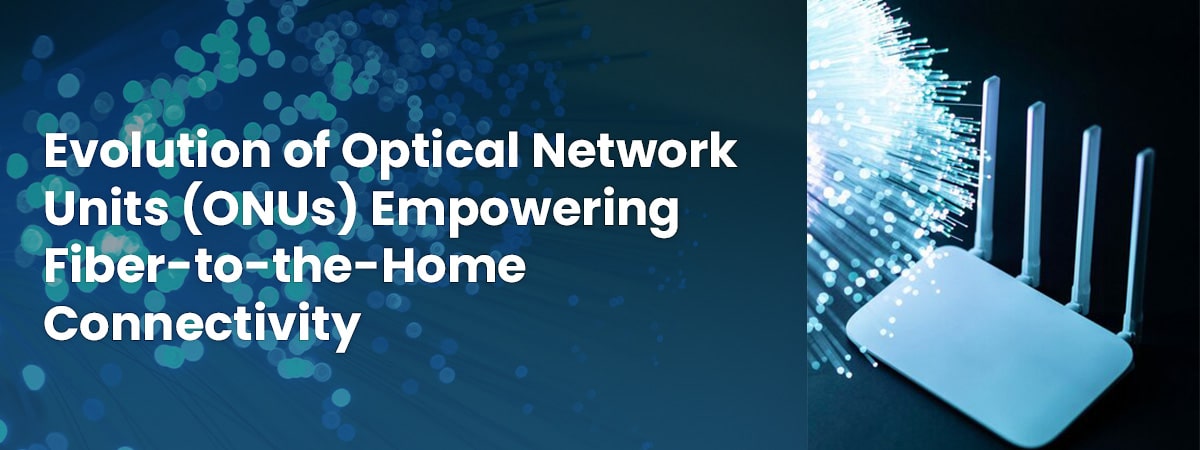Introduction:
In the early 2000s, a groundbreaking technology emerged, revolutionizing the way we connect to the internet and paving the way for faster, more reliable communication networks. Fiber-to-the-Home (FTTH) technology, coupled with the introduction of the first commercial Optical Network Unit (ONU), played a pivotal role in this transformation. In this article, we explore the origins of the ONU and its significance in enabling widespread FTTH deployment.
The Need for Fiber-to-the-Home Technology:
1.1 Growing Bandwidth Demands:
As internet usage expanded and bandwidth requirements escalated, traditional copper-based networks struggled to keep pace with the increasing demand for high-speed connectivity. This created a need for a more robust and future-proof solution that could deliver faster speeds and accommodate data-intensive applications.
1.2 Advantages of Fiber Optic Networks:
Fiber optic networks presented a compelling solution to address the limitations of traditional copper-based infrastructure. By transmitting data as pulses of light through thin strands of glass, fiber optics enabled significantly higher bandwidth, lower latency, and immunity to electromagnetic interference.
Introducing the Optical Network Unit (ONU):
2.1 Definition and Purpose:
The Optical Network Unit (ONU) is a critical component of the FTTH architecture. It serves as the interface between the fiber optic network and the end-user’s premises, enabling the distribution of high-speed data, voice, and video services.
2.2 Early Commercial Deployments:
In the early 2000s, the first commercial ONUs were introduced, marking a significant milestone in the evolution of FTTH technology. These initial deployments showcased the immense potential of fiber optics in transforming the way we connect and communicate.
Key Features and Functionality of ONUs:
3.1 Fiber Optic Interface:
ONUs feature a fiber optic interface, typically in the form of a fiber optic connector or a small transceiver module. This interface allows the ONU to receive and transmit data over the optical fiber infrastructure.
3.2 Signal Conversion:
ONUs are responsible for converting the optical signals received from the fiber network into electrical signals that can be used by various devices within the premises. This conversion enables seamless integration with existing networking equipment, such as routers and switches.
3.3 Multiple Service Support:
ONUs are designed to support a range of services, including high-speed internet access, voice over IP (VoIP), IPTV, and video-on-demand. They offer multiple ports for connecting devices and enable the distribution of these services to different endpoints.
Advantages of ONU Deployment in FTTH Networks:
4.1 High-Speed Connectivity:
ONUs enable the delivery of ultra-fast internet speeds directly to homes and businesses, meeting the growing demands of bandwidth-hungry applications and services.
4.2 Enhanced Reliability:
By utilizing fiber optic infrastructure, ONUs provide superior reliability and stability compared to traditional copper-based networks. Fiber is immune to electromagnetic interference, ensuring consistent performance and minimal downtime.
4.3 Future-Proof Infrastructure:
Deploying ONUs as part of FTTH networks ensures a future-proof infrastructure capable of accommodating evolving technologies and increasing bandwidth requirements. This scalability and flexibility make ONUs a long-term investment for network operators.
The ONU’s Role in Digital Transformation:
The proliferation of ONUs and the widespread adoption of FTTH technology have been instrumental in driving digital transformation across various sectors. They have unlocked new possibilities for high-quality video streaming, teleconferencing, cloud services, smart home applications, and other innovative digital experiences.
Conclusion:
The introduction of the first commercial Optical Network Unit (ONU) in the early 2000s marked a significant milestone in the development of Fiber-to-the-Home (FTTH) technology. ONUs have played a vital role in empowering high-speed connectivity and enabling the digital transformation of our society. As these devices continue to evolve, ONUs will remain at the forefront of providing reliable, fast, and future-proof connections, shaping the way we connect and communicate in the digital age.
